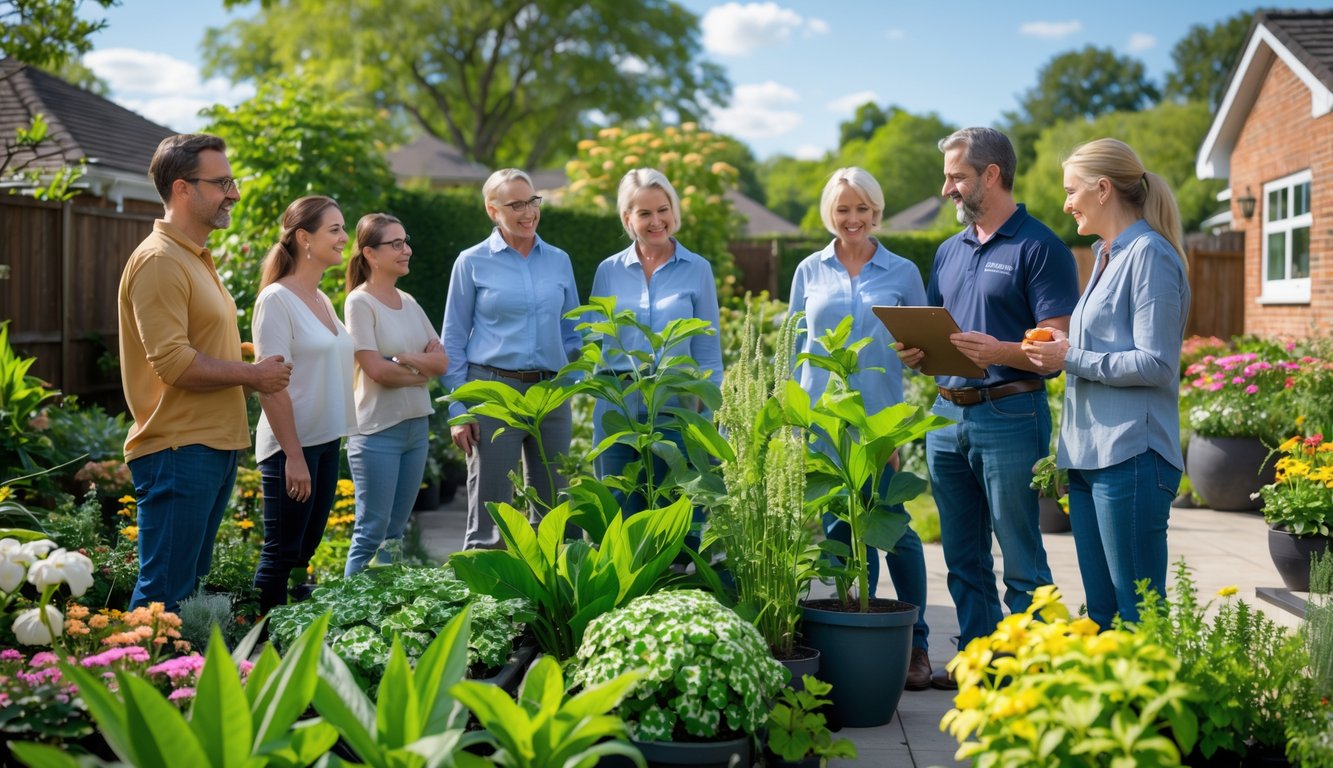
Okay, can we talk about the coffee grounds thing? Because, honestly, every time I visit someone, there’s a sad little houseplant with a crust of used coffee on top. Why is this still happening? My neighbor’s pothos looks like it’s been through a caffeine intervention. Oh, and don’t get me started on the misting obsession—my friend insists her succulents need a daily spritz because her grandma read it somewhere. Sure, Grandma. But, you know, most of this stuff—watering on a timer, miracle “air-purifying” claims, dumping coffee grounds everywhere—doesn’t actually line up with what botanists or, like, any recent research says. I mean, in my last plant group, someone counted over twenty myths just in one year’s worth of basic indoor gardening guides. Twenty! Who’s keeping track of this nonsense?
Ever rearranged your whole living room so your fiddle leaf gets “perfect” indirect light, only to find two totally opposite care tips five minutes later? Same. It’s like, the more I Google “best potting mix,” the less I know. Even big-name sites keep recycling these weird half-truths. I still remember my uncle swearing by ice cubes for orchids (nope, not a thing)—a botanist once called those “plant urban legends.” Kind of sums it up.
And the air-purifying myth? Oh boy. There’s a viral post every week claiming a single spider plant will purify your whole apartment. Reality check: you’d need, like, hundreds, according to this article. I swear, late-night gardening forums are just people inventing hacks for likes. Who’s even checking these tips? Where did that “rocks at the bottom of pots” thing start? I honestly want to know, but also, I don’t.
Popular Plant Health Myths Homeowners Still Believe

If dirt could roll its eyes, it would. Garden center “advice” just echoes around forever—half the stuff they sell is based on vibes, not science. Most people I know completely ignore what actual botanists (the ones with dirt under their nails and peer-reviewed papers) say: your peace lily does not care about your calendar, no matter what Instagram tells you.
The Myth of Overwatering as the Main Cause of Plant Death
I wake up sweating, convinced I’ve murdered my fern again. Everyone blames overwatering, like it’s the only villain in the houseplant world. Back in the day, I taped a watering schedule to my fridge—felt so organized. Did my monstera love it? Nope. Turns out, it was suffocating in dense, soggy peat, sitting in a plastic pot with drainage holes smaller than a pinprick. Classic.
Botanists and the Royal Horticultural Society have been saying it forever: it’s not “too much water,” it’s water with nowhere to go. All those overwatering myths? Completely miss the point. It’s about airflow, soil mix, and drainage. If you see black spots and mushy roots, that’s the real issue—not just a wet leaf. I meet people who panic at every brown edge, convinced it’s overwatering, when half the time, they just compacted the potting mix months ago and forgot.
One nursery owner told me she’s composted more spider plants from people underwatering out of fear than anything else. And those viral “plant hacks”? They never mention the junky potting soil or those tiny nursery pots. Why is it always my fault and never the hardware store’s?
Misconceptions About Yellow Leaves
I get a call every week: “What do yellow leaves mean?” Different plant, same panic. Pothos, fiddle leaf, whatever. They snip every yellow leaf, blame the sun, water, fertilizer, ghosts, or incense from next door. But, honestly, yellow leaves are like the check engine light—could be a big deal, could be nothing.
This myth that yellow leaves scream “bad care” just won’t die. Most of the time, it’s just old leaves dropping off or new growth crowding out the old. University scientists (the ones who grow fields of identical carrots to watch them fade) say yellowing can come from root problems, a sudden cold snap, low humidity, leftover fertilizer, or just a weird week of light. Not just water.
A plant shop designer told me yellow leaves sometimes just mean the plant is moving nutrients around, especially in winter. She rotates her plants and watches new growth, not the old leaves. I’ve tried Epsom salt, tea, and even chanting at the plant—nothing ever brought a yellow leaf back. Not once.
Belief That All Plants Need Daily Watering
I spent a whole month running around with a watering can every morning, feeling so responsible. My calathea drooped in protest, then my cactus started to rot. That “daily care” routine? Total backfire. Science says daily watering is pointless for most plants, sometimes even harmful.
Botanists have put up actual signs in public gardens: “Do NOT Water Daily.” People still drench their aloe while their neighbor’s pothos turns yellow. Most houseplants? They want a chance to dry out, not a daily bath. I once kept an orchid alive for three years by watering only on Sundays—neglect worked better than micromanagement.
If you want to kill a succulent, water it every day. Works faster than letting a toddler “help.” Even tropical plants like some wet-dry cycles (it’s a real thing—“wet-dry cycling”—botanists have a field day with that one). Now I just poke a chopstick in the soil. If it’s damp, I wait. Not every myth survives a reality check.
Mistakes in Watering Practices
I get tangled up in the daily watering rotation, thinking hydration fixes everything. But my pothos doesn’t care about my Google calendar, and my peace lily can’t text me if tap water gives it a bad hair day. Houseplant care is somehow more chaotic than my kitchen gadgets.
Relying Strictly on a Watering Schedule
Every “expert” chart screams, “Tuesday is watering day!”—like plants care about my week. My calathea needed extra water midweek during a dry spell, then sat soggy when the weather changed. Cornell’s extension says root rot comes from wet feet, not late waterings, but I still catch myself checking the clock instead of the soil.
Moisture meters? Mine’s lost in a drawer somewhere. Honestly, sticking a finger in the dirt works better. Plants wilt or yellow if I ignore the signs, but watering by schedule just makes it worse—especially when the weather or light changes. Schedules only help the forgetful. “Once a week” is everywhere, but it’s just not true.
Plant apps and printable planners keep this idea alive. My plants don’t care about my appointments—they follow their roots. I tossed my notebook. My snake plant looks happier.